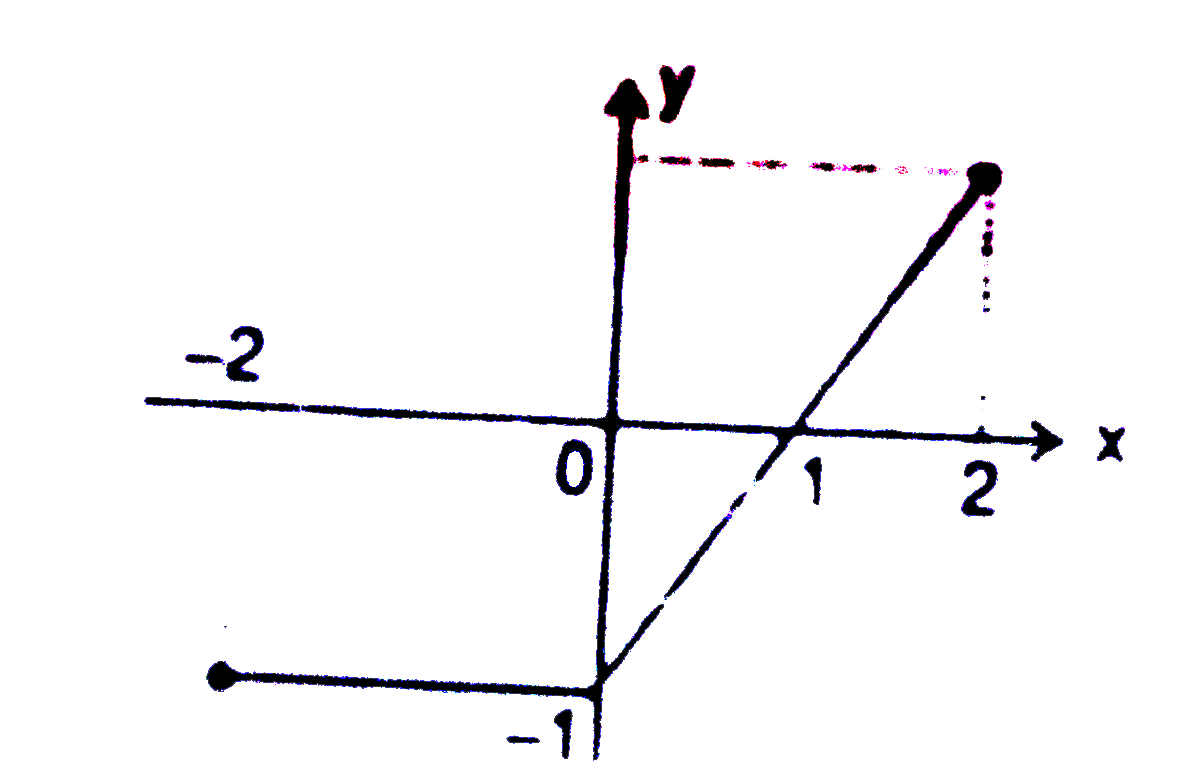If the graph of the function y=f(x) has a unique tangent at point (ea,0) (not vertical, non-horizontal) on the graph, then evaluate limx→ealoge((1+9f(x))−tan(f(x)))2f(x).
The correct Answer is:4
To solve the limit problem, we will follow these steps:
Step 1: Identify the given information
We know that the function y=f(x) has a unique tangent at the point (ea,0). This means:
- f(ea)=0
- f′(ea) exists and is not equal to zero (since the tangent is neither vertical nor horizontal).
Step 2: Set up the limit expression
We need to evaluate the limit:
limx→ealog(1+9f(x))−tan(f(x))2f(x)
Step 3: Substitute x=ea
Substituting x=ea into the limit gives:
- f(ea)=0
- Thus, 9f(ea)=0
- log(1+9f(ea))=log(1)=0
- tan(f(ea))=tan(0)=0
This results in an indeterminate form 0−00=00.
Step 4: Apply L'Hôpital's Rule
Since we have a 00 form, we can apply L'Hôpital's Rule:
limx→eaddx(log(1+9f(x))−tan(f(x)))ddx(2f(x))
Step 5: Differentiate the numerator and denominator
1. Differentiate the numerator:
- The derivative of log(1+9f(x)) is:
9f′(x)1+9f(x)
- The derivative of tan(f(x)) is:
sec2(f(x))⋅f′(x)
- Therefore, the derivative of the numerator is:
9f′(x)1+9f(x)−sec2(f(x))f′(x)
2. Differentiate the denominator:
- The derivative of 2f(x) is:
2f′(x)
Step 6: Rewrite the limit using derivatives
Now we have:
limx→ea9f′(x)1+9f(x)−sec2(f(x))f′(x)2f′(x)
Step 7: Factor out f′(x)
Assuming f′(x)≠0 near ea, we can factor f′(x):
=limx→eaf′(x)(91+9f(x)−sec2(f(x)))2f′(x)
This simplifies to:
=limx→ea91+9f(x)−sec2(f(x))⋅12
Step 8: Substitute f(ea)=0
Substituting f(ea)=0:
=91+9⋅0−sec2(0)⋅12
=91−1⋅12
=9−12=182−12=172
Step 9: Final answer
Thus, the limit evaluates to:
172
We know that the function y=f(x) has a unique tangent at the point (ea,0). This means:
- f(ea)=0
- f′(ea) exists and is not equal to zero (since the tangent is neither vertical nor horizontal).
We need to evaluate the limit:
limx→ealog(1+9f(x))−tan(f(x))2f(x)
Substituting x=ea into the limit gives:
- f(ea)=0
- Thus, 9f(ea)=0
- log(1+9f(ea))=log(1)=0
- tan(f(ea))=tan(0)=0
Since we have a 00 form, we can apply L'Hôpital's Rule:
limx→eaddx(log(1+9f(x))−tan(f(x)))ddx(2f(x))
1. Differentiate the numerator:
- The derivative of log(1+9f(x)) is:
9f′(x)1+9f(x)
- The derivative of tan(f(x)) is:
sec2(f(x))⋅f′(x)
- Therefore, the derivative of the numerator is:
9f′(x)1+9f(x)−sec2(f(x))f′(x)
- The derivative of 2f(x) is:
2f′(x)
Now we have:
limx→ea9f′(x)1+9f(x)−sec2(f(x))f′(x)2f′(x)
Assuming f′(x)≠0 near ea, we can factor f′(x):
=limx→eaf′(x)(91+9f(x)−sec2(f(x)))2f′(x)
This simplifies to:
=limx→ea91+9f(x)−sec2(f(x))⋅12
Substituting f(ea)=0:
=91+9⋅0−sec2(0)⋅12
=91−1⋅12
=9−12=182−12=172
Thus, the limit evaluates to:
172
Topper's Solved these Questions
- DIFFERENTIAL CALCULUSBOOK - VMC MODULES ENGLISHCHAPTER - DIFFERENTIAL CALCULUSEXERCISE - JEE main (Archive)
51 Videos
- DIFFERENTIAL CALCULUSBOOK - VMC MODULES ENGLISHCHAPTER - DIFFERENTIAL CALCULUSEXERCISE - JEE Advanced (Archive)
75 Videos
- DIFFERENTIAL CALCULUSBOOK - VMC MODULES ENGLISHCHAPTER - DIFFERENTIAL CALCULUSEXERCISE - LEVEL 2
103 Videos
- CONIC SECTIONSBOOK - VMC MODULES ENGLISHCHAPTER - CONIC SECTIONSEXERCISE - JEE ADVANCED ARCHIVE
76 Videos
- DIFFERENTIAL CALCULUS 2BOOK - VMC MODULES ENGLISHCHAPTER - DIFFERENTIAL CALCULUS 2EXERCISE - JEE Advanced (Archive)
81 Videos
Similar Questions
If the graph of the function y=f(x) has a unique tangent at the point (a,0) through which the graph passes, then evaluate (lim)x→a(log)e{1+6f(x)}3f(x)
View SolutionThe graph of the function y=f(x) has a unique tangent at the point (a,0) through which the graph passes. Then evaluate
limx→aloge{1+6f(x)}3f(x).
View SolutionDraw the graph of the function: f(x)=log|x|
View SolutionThe graph of the function y=f(x) has a unique tangent at the point (ea,0) through which the graph passes then lim–––––(x→ea)loge{1+7f(x)}−sinf(x)3f(x)
View SolutionDraw the graph of the function f(x)=2x2−loge|x|
View SolutionIf the graph of the function y=f(x) is as shown :

the graph of y=12(|f(x)|−f(x)) is
View SolutionIf the graph of the function y=f(x) is as shown :

The graph of y=1/2(|f(x)|−f(x)) is
View SolutionIf the graph of the function y=f(x) is as shown :

The graph of y=1/2(|f(x)|−f(x)) is
View SolutionFor the function f(x)=2. Find limx→1f(x)
View SolutionDraw the graph of the function y=f(x)=limn→∞cos2nx and find its period.
View Solution
